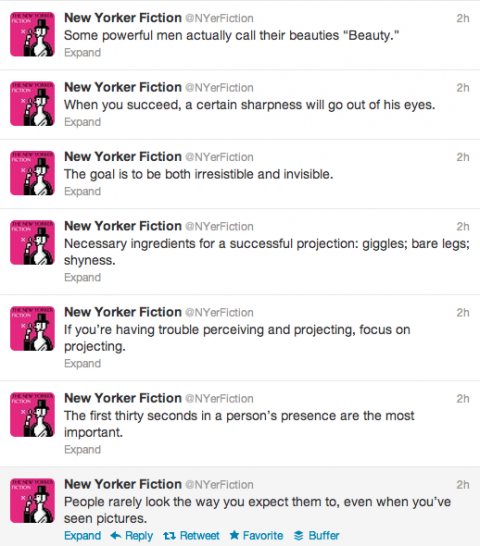Two of the greatest American novels of the 20th century–F. Scott Fitzgerald’s The Great Gatsby and Jack Kerouac’s On the Road–are headed for the big screen later this year, and literary fans are bracing for the worst.
Or at least that’s very much the case with Baz Luhrmann’s 3‑D version of The Great Gatsby, starring Leonardo DiCaprio as Jay Gatsby, Carey Mulligan as Daisy Buchanan and Tobey Maguire as narrator Nick Carraway. The trailer was released earlier this week (see above) and the Internet has been buzzing. A headline writer at the New York Daily News observed that the new adaptation by the Australian filmmaker who brought us Moulin Rouge! “won’t be your high school teacher’s F. Scott Fitzgerald.” Over at the Wall Street Journal’s “Speakeasy” blog, Lyneka Little described the music in the trailer (by those Jazz Age luminaries Kanye West, Jay‑Z and Jack White) as “awfully contemporary.” But when it comes to the perfect choice of words, the prize must go to actor James Urbaniak, who said yesterday on Twitter, “The Great Gatsby 3D: Borne back ceaselessly into your face.”
Literary purists are a bit more hopeful when it comes to the first-ever film of Kerouac’s On the Road. In The New York Times yesterday, Steve Chagollan described the painstaking research conducted by director Walter Salles, best known for his 2004 film about Che Guevara, The Motorcycle Diaries. The Brazilian director retraced Kerouac’s journeys across North America and interviewed scholars and surviving members of the Beat Generation. “I was well aware that my passion for the book was not sufficient to justify launching into an adaptation straight away,” Salles told the Times. “In fact, making the feature film ceased to be my main concern at the time. Understanding and getting to know these people better became my main goal.” Still, as Chagollan put it, Beat aficionados will be watching the film very closely, “certain to cast an unforgiving eye.”
There’s an old saying: Good books make bad movies, and vice versa. But is it true? It’s not difficult to come up with the names of a few good books that have been made into memorable movies. Phillip Noyce’s adaptation of Graham Greene’s The Quiet American comes to mind. So does Blake Edwards’s film of Truman Capote’s Breakfast at Tiffany’s and Stanley Kubrick’s film of Anthony Burgess’s A Clockwork Orange. It’s even possible to think of a great film made from a literary masterpiece, as in the case of Kubrick’s adaptation of Vladimir Nabokov’s Lolita. Kubrick expressed his thoughts on translating books into films in a 1960–1961 essay, “Words and Movies”:
It’s sometimes said that a great novel makes a less promising basis for a film than a novel which is merely good. I don’t think that adapting great novels presents any special problems which are not involved in adapting good novels or mediocre novels; except that you will be more heavily criticised if the film is bad, and you may be even if it’s good. I think almost any novel can be successfully adapted, provided it is not one whose aesthetic integrity is lost along with its length. For example, the kind of novel in which a great deal and variety of action is absolutely essential to the story, so that it loses much of its point when you subtract heavily from the number of events or their development. People have asked me how it is possible to make a film out of Lolita when so much of the quality of the book depends on Nabokov’s prose style. But to take the prose style as any more than just a part of a great book is simply misunderstanding just what a great book is. Of course, the quality of the writing is one of the elements that make a novel great. But this quality is a result of the quality of the writer’s obsession with his subject, with a theme and a concept and a view of life and an understanding of character. Style is what an artist uses to fascinate the beholder in order to convey to him his feelings and emotions and thoughts. These are what have to be dramatised, not the style. The dramatising has to find a style of its own, as it will do if it really grasps the content. And in doing this it will bring out another side of the structure which has gone into the novel. It may or may not be as good as the novel; sometimes it may in certain ways be even better.
What do you think? Are you looking forward to seeing the new Great Gatsby and On the Road films? And can you think of a great book that has been made into an equally great–or even greater–movie?



